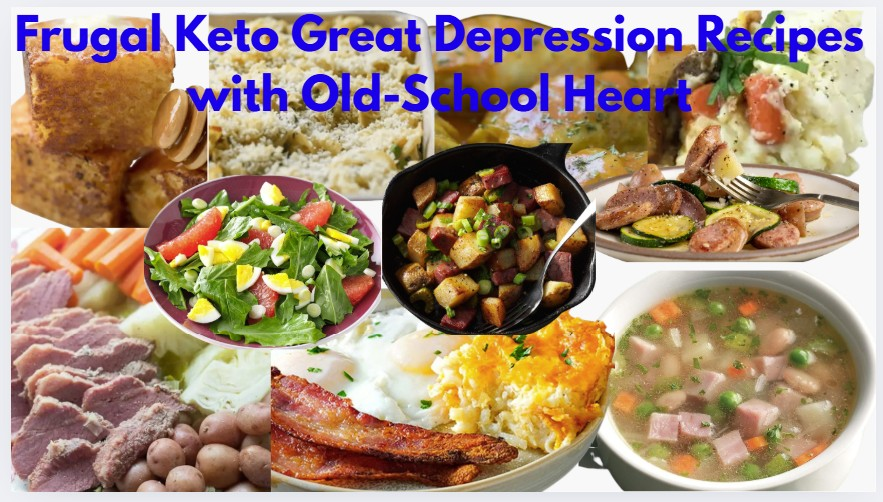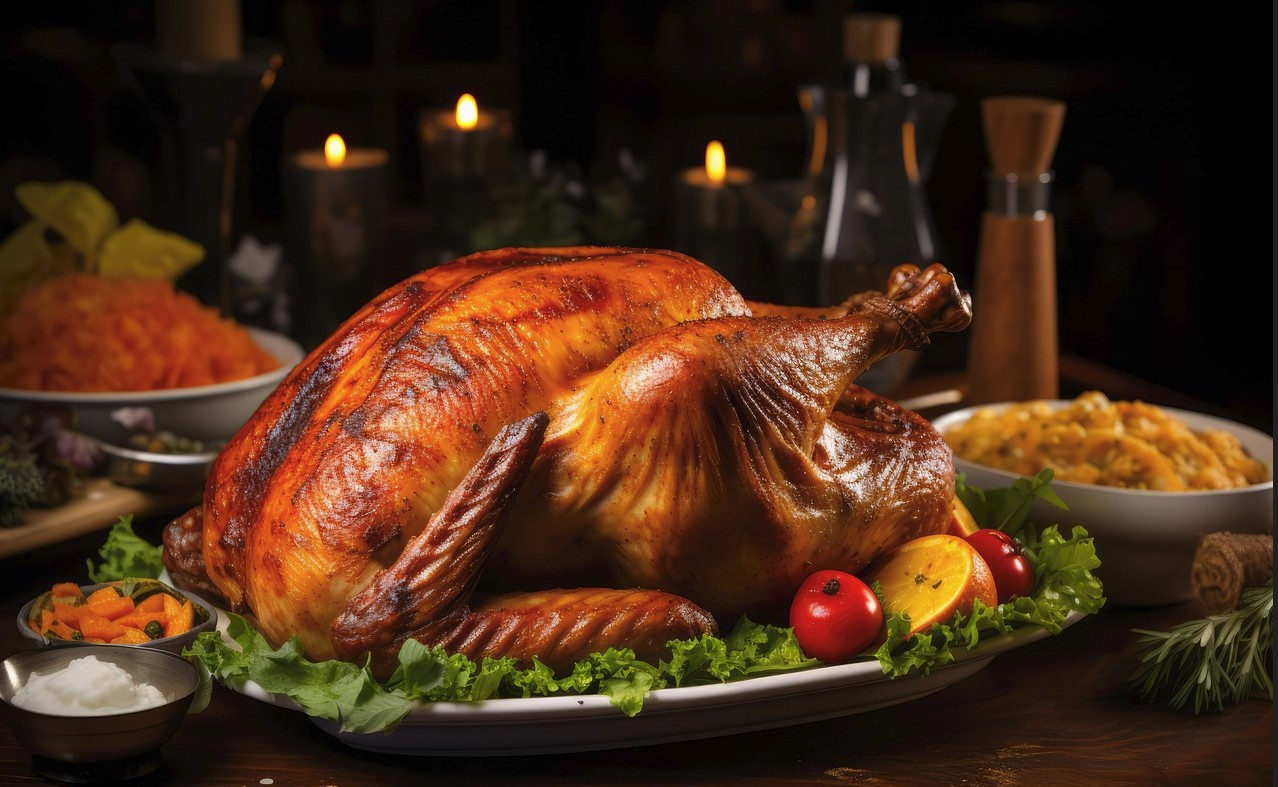Getting cheap groceries on a tight college budget isn’t just about grabbing the cheapest items on the shelf. It’s a balancing act between affordability, nutrition, and convenience. Many students struggle with knowing what to buy that lasts, fuels their bodies well, and fits their limited time and money.
This post will guide you through creating essential grocery lists that hit all these points. You’ll find practical tips on budgeting, meal planning, and choosing versatile, nutritious staples. Whether you’re cooking in a dorm or shared kitchen, these strategies will help you eat smart, save cash, and avoid food waste.

How to Plan Your Grocery Shopping on a College Budget
Grocery shopping in college isn’t just about grabbing whatever’s quick and cheap. It takes some thought, especially when funds are tight and your time is shorter than your sleep hours. Planning your shopping trips right from the start can keep your budget intact and your meals decent.
The Basics: Understanding Your Needs
Before you head to the store or scroll through online aisles, figure out your actual needs. It’s more than just that tempting 24-pack of soda or a mega bag of chips.
- Are you on a meal plan? Some schools offer meal plans, which means you might not need to buy as many groceries. If your meal plan covers most lunches or dinners, focus on breakfast items, snacks, and simple meals you can prepare yourself. Otherwise, your list will need to be more comprehensive.
- Are you still staying in a dorm? Dorm life often limits your kitchen space and cooking appliances. You might not have a full kitchen, so think about meals that require minimal gear—maybe a microwave or a small fridge. If you’re off-campus with access to a kitchen, you can plan for more elaborate meals and bulk purchases.
Setting Your Weekly or Monthly Grocery Budget
Knowing your budget before shopping avoids that “oops, did I just spend my entire paycheck?” moment.
Average grocery costs for college students tend to fall around $50 to $75 per week, but your exact budget depends on your location, eating habits, and how often you eat out. Urban areas usually push prices higher, while smaller towns might give you some wiggle room.
Here’s how to set an affordable limit:
- Set a Weekly Budget: Starting with $50-$75 per week is practical. Track your spending to see if this fits your appetite and lifestyle.
- Stick to the Budget: Use tools like budgeting apps or simply jot down expenses in a notebook. Staying on track means saving enough for occasional treats or social outings.
Think of your budget like a fuel gauge; you want to keep it from hitting empty before payday.

Photo by Karolina Grabowska
Meal Planning and List Making for Success
Meal planning might sound like extra work, but it actually makes shopping easier and helps avoid waste. Here’s a simple routine:
- Weekly Planning: Spend 10-15 minutes on Sundays planning your meals. It’s like creating a puzzle with your ingredients, fitting them to cover breakfasts, lunches, dinners, and snacks.
- Mix and Match: Use ingredients across multiple meals. For example, buy a bag of spinach that can go into both a salad and a stir-fry. This reuse cuts down on waste and keeps your list manageable.
- Consider Your Lifestyle: If you’re rushing between classes, choose foods that don’t require long prep—think quick stovetop or microwave recipes. If you have more time in the kitchen, try cooking a batch to eat over a few days. Simple skills like boiling pasta or scrambling eggs can go a long way.
Cross-check your pantry before planning so you don’t accidentally buy things you already have. Knowing what’s at home helps trim your shopping list down to essentials only.
Money-Saving Tips for Grocery Shopping
Saving money goes beyond budget-setting and meal planning. Here’s how to shop smart:
- Shop Sales and Use Coupons: Retailers often have sales on staples. Apps like Flipp and RetailMeNot can help you spot deals and clip coupons.
- Buy in Bulk for Basics: Items like rice, pasta, and toilet paper are worth buying in larger quantities if you can store them. It reduces cost per serving but makes sure you’re not buying more than you’ll need.
- Don’t Shop Hungry: Shopping on an empty stomach is the fastest way to fill your cart with impulse buys that don’t fit your budget or meal plan.
- Use a Shopping List: Whether on paper or an app, listing helps keep you on track. Crossing off items feels rewarding and keeps wandering eyes away from unnecessary treats.
- Stick to Store Brands: Store brands often deliver similar quality at a lower price compared to name brands. Your wallet will appreciate it, even if your taste buds don’t notice much difference.
- Embrace Leftovers: Large batch cooking means you can eat well without cooking every day. Save leftovers for another meal, reducing both time and money spent.
- Buy Frozen Fruits and Vegetables: Frozen produce tends to be cheaper, lasts longer, and keeps its nutrients. They’re perfect for smoothies, soups, or quick sautéed dishes.
- Shop Seasonally: Seasonal produce is cheaper and tastes better. Visit local farmers’ markets or check for in-season deals at the store.
With some planning and these handy tips, grocery shopping can become a part of your college routine that works for your budget and your busy schedule.
For detailed ideas and additional tips, check out Adulting 101: How to Make a College Student Grocery List which offers helpful strategies tailored for students on tight budgets. Also, resources like Nutrition.gov’s Food Shopping and Meal Planning provide useful tools on healthy budgeting for food.
By understanding your needs, setting a clear budget, planning meals thoughtfully, and shopping with intention, you’ll avoid the last-minute “what’s for dinner?” panic and stretch your dollars further than you thought possible.

Essential Grocery Categories for College Students
When you’re juggling tight budgets and a busy schedule, knowing what to stock up on makes all the difference. These essential grocery categories balance affordability, nutrition, and flexibility. They’re your foundation for quick meals, snacks, and the occasional treat. Here’s a breakdown of the must-have groups every college student should have on their list.
Produce: Fresh, Frozen, and In-Season Options
Fresh fruits and vegetables pack a punch of vitamins without packing a heavy price tag—especially if you focus on in-season picks or frozen options. Seasonal produce often tastes better and costs less because it’s plentiful, while frozen versions keep well and retain most of their nutrients, perfect for days when fresh isn’t in the budget or time is tight.
Some reliable, budget-friendly produce to keep around:
Fruits:
- Bananas: Affordable, filling, and versatile for snacks or smoothies.
- Apples: A crunchy favorite for quick bites or dipping in peanut butter.
- Berries (blueberries, strawberries): Great to brighten up yogurt, cereal, or oatmeal.
- Avocado: Offers healthy fats and creamy goodness for toast or salads, a small luxury worth saving for.
Vegetables:
- Spinach: Nutrient-dense, perfect fresh in salads or blended into smoothies.
- Carrots: Crunchy snacks or roasted as a side, they add color and fiber.
- Bell Peppers: Sweet and crisp, ideal raw or sautéed.
- Broccoli: Economical and healthy whether steamed, roasted, or tossed in a casserole.
Embrace frozen bags of peas, mixed veggies, or spinach—they’re easy to store and quick to cook, helping you avoid spoilage and waste.

Photo by Julia M Cameron
Grains and Pantry Staples
Carbs are your go-to energy source and offer endless versatility. Stock your pantry with these staples that stretch your budget without feeling boring:
- Rice: Inexpensive and easy to cook. White, brown, or instant varieties all work well.
- Pasta: A classic comfort food, perfect with a quick jar of sauce or tossed with veggies.
- Bread: For sandwiches, toast, or even quick pizza bases (go whole grain for extra fiber).
- Oats: A hearty breakfast option that you can dress up with fruit or peanut butter.
- Tortillas: Use for wraps, quesadillas, or simple snacks—you can switch between flour and corn for variety.
Along with grains, keep basic condiments and pantry items close. Olive oil, salt, and pepper are fundamentals. Starting with a few spices like garlic powder, paprika, or Italian seasoning can turn simple dishes into flavorful meals. Soy sauce and vinegar add depth to stir-fries and salads without extra cost. A jar of pasta sauce is a lifesaver for speedy dinners after long days.
Proteins: Animal and Plant-Based Choices
Protein is key to staying full and focused during those long study sessions. A few budget-friendly sources give you many ways to mix it up:
- Eggs: The kitchen’s MVP for quick breakfasts, snacks, or adding protein to any meal.
- Chicken Breast: Lean, affordable, and adaptable—bake it, grill it, or toss in a stir-fry.
- Tofu: A vegetarian staple that soaks up flavors wonderfully, easy to marinate and cook.
- Peanut Butter: Deliciously versatile, whether spread, blended in smoothies, or eaten straight.
- Canned Tuna: A cost-effective, protein-rich option great for sandwiches, salads, or pasta.
These items offer balance between taste, nutrition, and convenience. For more ideas on cheap protein sources, resources like Healthline’s list on affordable proteins provide excellent guidance.
Dairy and Dairy Alternatives
Calcium and protein don’t have to break the bank. Whether you prefer traditional dairy or plant-based options, this category has accessible picks:
- Milk or Plant-Based Alternatives: From cow’s milk to almond, soy, or oat milk, there’s a carton that fits your dietary choices and budget.
- Yogurt: Choose plain yogurt and add your own fresh fruit or honey to keep sugar low and flavor high.
- Cheese: Adds flavor and texture whether melted on sandwiches or sprinkled on dishes.
Plant-based options like almond or soy milk can be affordable and offer variety. For an overview of what’s available, check out this guide to dairy and dairy alternatives. They can help you compare options based on nutrition and cost.
Canned, Frozen, and Non-Perishable Goods
Convenience is crucial when time is short and cooking energy low. Stocking canned and frozen goods helps keep your kitchen ready with little effort:
- Canned Vegetables and Beans: Good backups when fresh isn’t available; beans add protein and fiber.
- Soups: Quick meals that require minimal prep, great for colder days.
- Frozen Meals: Useful for busy nights, but opt for healthier options with balanced ingredients.
- Canned Tuna or Chicken: Long shelf life and protein-packed for sandwiches or salads.
Non-perishables save money by reducing food waste and providing quick meal building blocks. Essentials like canned tomatoes, dried pasta, and mixed beans contribute to low-cost cooking that doesn’t feel like a chore. For a solid list, resources such as Out of Milk’s checklist for non-perishables offer practical ideas that fit student budgets.
This selection across categories gives you varied essentials that work well together. They support nutritious meals without complicated cooking or excessive costs, making them ideal for college life on a budget.
Quick and Healthy Meal Ideas Using Budget Groceries
Eating well on a budget as a college student might sound tricky, but it’s absolutely possible with a bit of planning. The key is choosing simple meals that require few ingredients, don’t take much time, and keep you full and energized. You won’t need hours in the kitchen or expensive ingredients to whip up meals that taste great and give you the nutrition you need. Below are some practical, budget-friendly ideas for every meal of the day, plus snacks and drinks to keep you going between classes.
Breakfasts: Fast, Filling, and Affordable
Breakfast sets the tone for your day, so it should be something quick and nourishing. Here are a few options that are easy to prepare and won’t drain your budget:
- Overnight Oats
Just mix rolled oats with milk or yogurt in a jar, add some fruit (like sliced bananas or berries) and nuts if you like, then let it chill overnight in the fridge. By morning, you have a creamy, ready-to-eat breakfast that’s loaded with fiber and protein. You can also add a drizzle of honey or cinnamon for extra flavor. - Avocado Toast
Toast a slice of whole-grain bread, spread avocado on top, and season with a little salt and pepper. For extra fuel, add a fried or poached egg. This combo provides healthy fats, protein, and complex carbs that keep hunger at bay during long lectures. - Smoothies
A quick blender breakfast is a lifesaver on rushed mornings. Blend a banana, a handful of spinach, a scoop of plain yogurt, and a splash of milk or water. It’s vibrant, fresh, and packed with vitamins. Plus, it’s portable if you need to eat on the go.
These breakfasts use staple ingredients you can buy in bulk or freeze, making them both cost-effective and consistent crowd-pleasers. For more budget breakfast ideas, check out this list of cheap and easy meals for college students.
Lunches: Portable and Prep-Friendly
Lunch during college should fit your schedule and keep you fueled through the afternoon without costing a fortune or requiring a big cleanup. Here are some simple meals that can easily be made ahead or taken to class:
- Chicken Wrap
Grab a tortilla, fill it with grilled chicken, fresh lettuce, chopped tomatoes, and a bit of your favorite dressing. Roll it tight, and you have a portable, protein-packed meal that takes just a few minutes to assemble. - Vegetable Stir-Fry
Use whatever veggies you have on hand — carrots, bell peppers, broccoli, and frozen mixed veggies all work. Stir-fry them quickly with soy sauce and serve over rice or noodles. It’s colorful, healthy, and perfect for using leftover vegetables. - Quinoa Salad
Cook quinoa and mix it with diced vegetables, some crumbled feta cheese, and a squeeze of lemon juice. Quinoa is an excellent plant-based protein and keeps well in the fridge, making this a great make-ahead lunch.
If you want more ideas that balance nutrition and budget, you might like Budget Bytes’ top recipes for college students.

Photo by Ella Olsson
Dinners: One-Pan Meals and Stir-Fries
Evenings call for something satisfying and easy to clean up, especially when you’re juggling studying and social life. These dinner ideas use a handful of ingredients and require minimal effort:
- Pasta Primavera
Cook some pasta and toss it with sautéed vegetables like zucchini, peppers, and cherry tomatoes. Finish with a sprinkle of parmesan cheese for taste and a touch of healthy fats. - Chili
Make a large pot of chili using canned beans, diced tomatoes, and ground meat or tofu. It’s filling, cost-effective, and perfect for leftovers. Serve with rice or cornbread for a comforting, hearty meal. - Baked Potatoes
Bake a big potato, then top it with cheese, steamed broccoli, and a dollop of sour cream. It’s an old-school favorite that’s easy to customize based on what you have and offers a good mix of carbs, fat, and protein.
For additional affordable dinner options, visit this page on cheap healthy dinners under $3 a serving.
Snacks and Easy-Grab Foods
Snacks are essential, because sometimes you need something quick between meals or during a long study session. These ideas are healthy, budget-friendly, and portable.
- Popcorn
A whole grain snack that’s light and satisfying — perfect for Netflix nights or study breaks. - Granola Bars
Keep some for emergencies. They’re easy to carry when you’re running between classes. - Hummus and Veggies
Dip carrot sticks, cucumber slices, or pita bread in hummus for a crunchy, protein-rich snack. - Dark Chocolate
A little bit of chocolate can brighten your afternoon, just keep it moderate. - Trail Mix
Combine nuts, dried fruit, and a few chocolate chips for an energizing mix that’s easy to munch on any time.
Some other good snacks include a yogurt parfait (yogurt layered with granola and berries) or a peanut butter banana sandwich, which balances sweetness and protein without complicating prep.
Beverages: Stay Hydrated and Caffeinated
Studying and moving between classes means staying hydrated while keeping alert. These drinks cover your bases without adding unnecessary expenses:
- Coffee or Tea
A staple for waking up and sharpening your focus. Brewing your own saves money compared to buying daily café drinks. - Juice
A small glass of juice in the morning can offer a vitamin C boost to start your day bright. - Water Bottles
Invest in a reusable bottle. It’s eco-friendly and cuts costs by avoiding constant purchases of bottled water.
Learning to hydrate wisely keeps your energy steady throughout the day — and that’s a budget win in itself.
Balancing quick preparation, nutrition, and cost is key when you’re living on a college schedule and budget. Stick to these smart meals, grab snacks that fuel rather than fill, and remember that simple ingredients can make your day run smoother and tastier. For more inspiration, try browsing recipes like those on Jenn Eats Goood, which showcase how to stretch grocery hauls into healthy meals.

Making the Most of Campus and Community Resources
Trying to stretch your grocery budget often means looking beyond the local supermarket. Luckily, many campuses and communities offer resources aimed at helping students access affordable or even free food options. Using these resources can ease the strain on your wallet while supporting a healthy diet. At the same time, digital tools are becoming essential allies in smart grocery shopping. Together, these resources can help you maximize your food budget and keep hunger at bay without sacrificing nutrition.
Campus Food Pantries, Swipe Programs, and Community Gardens
Food pantries on campus are designed to help students facing food insecurity by providing free groceries or snacks. These pantries usually stock staples like rice, canned goods, fresh produce, and sometimes prepared foods. Many campuses partner with nonprofit groups to maintain these pantries, ensuring the supply stays steady throughout the semester. Accessing a food pantry is often as simple as showing your student ID and filling out a quick form, so don’t hesitate to take advantage if you need support.
Swipe programs offer another unique opportunity. These initiatives allow students to donate unused meal swipes from their meal plans to peers who might need extra food. If your school participates in such a program, it’s an excellent way to fill in meal gaps without additional cost. You can learn more and register through your campus dining services or student affairs office.
Some universities also host community gardens where students can grow their own vegetables and herbs. Getting involved in a campus garden is not just a way to save money: it’s a chance to connect with others, relieve stress, and enjoy fresh, organic produce. These gardens often welcome volunteers and sometimes distribute harvests to student families in need.
If you’re curious about food pantries and related support, organizations like Swipe Out Hunger provide guidance on campus programs that help combat food insecurity. You can also check what your college offers through student support websites or local community centers.

Photo by Matheus Cenali
Digital Tools and Apps for Budget Grocery Shopping
In addition to physical resources, digital tools have transformed how students shop for groceries on a budget. Cashback apps like Ibotta or Rakuten give you money back on purchases, which can really add up over a semester. These apps often partner with major grocery chains, allowing you to earn rewards for buying everyday items.
Coupon finders and deal aggregators are another must-use. Apps and websites like Flipp or RetailMeNot gather current coupons and sales from local stores in one place, saving you time and boosting savings by combining digital coupons with in-store deals. You can also sign up for newsletters from your favorite supermarkets to receive exclusive discounts and alerts.
Meal planning websites and apps such as Mealime or Yummly help you organize your grocery lists around recipes, ensuring you buy only what you need. Many of them offer budget-friendly recipe options too. These tools help reduce food waste by matching your shopping directly to meals you plan to cook, which is a smart way to keep spending in check.
Taking advantage of these digital resources alongside campus supports turns shopping from a chore into a strategic part of managing your college life and budget.
For more on navigating food assistance and saving on groceries digitally, check out the SNAP benefits information for college students, which explains eligibility and application details to help you access federal support if you qualify.
By combining campus food resources with smart digital tools, you’ll find reliable ways to keep your kitchen stocked without overspending or compromising your health.

Printable College Grocery List
Having a printable grocery list can be a game changer for college students who want to shop smart, save money, and avoid buying things they don’t really need. The beauty of a printable list lies in its simplicity: having everything you need laid out right in front of you means fewer impulsive buys and less guesswork. Plus, it’s easy to keep on the fridge or in your backpack for quick review before hitting the store.
This section gives you a ready-made grocery checklist for a week’s worth of essentials, designed to balance nutrition, convenience, and budget. Whether you’re in a dorm with a mini-fridge and microwave or cooking in a shared apartment kitchen, this list covers versatile staples that can handle breakfasts, lunches, dinners, and snacks without wasting money or food.
Weekly Printable Grocery List for College Students
Here’s a practical list you can print and take along or keep on your phone for reference:
Produce:
- Bananas (4-5)
- Apples (4)
- Baby carrots (1 bag)
- Spinach or mixed greens (1 bag)
- Bell peppers (2)
- Frozen mixed vegetables (1 bag)
Grains & Bakery:
- Brown or white rice (1 small bag/box)
- Whole wheat bread (1 loaf)
- Tortillas (1 pack)
- Rolled oats (1 container)
- Pasta (1 box)
Protein:
- Eggs (1 dozen)
- Canned tuna or chicken (2-3 cans)
- Peanut butter (1 jar)
- Tofu or chicken breast (1-2 pounds)
- Dry beans or canned beans (2 cans)
Dairy & Alternatives:
- Milk or plant-based milk (1 carton)
- Plain yogurt (1 tub)
- Cheese (block or shredded, 1 small pack)
Pantry Basics:
- Olive oil or vegetable oil (small bottle)
- Salt and pepper
- Garlic powder or Italian seasoning
- Canned diced tomatoes (1 can)
- Pasta sauce (1 jar)
Snacks & Extras:
- Popcorn kernels or pre-popped bags
- Granola bars or trail mix (small pack)
- Hummus (single serve or small container)
Beverages:
- Coffee or tea bags
- Bottled water or reusable water bottle (if needed)
Having this checklist handy can keep your shopping focused and quick, limiting those “maybe I should buy this too” moments that blow your budget.
Downloadable Grocery Checklist for Students
If you prefer having an editable or downloadable version, many resources offer free templates designed specifically for students. Websites like Canva’s grocery list templates let you customize your list online before printing. These editable lists let you add or remove items according to your dietary needs or preferences without starting from scratch each week.

Similarly, the Fetch blog’s college grocery list offers insights plus printable options for essentials and snacks tailored for busy students. These checklists include common favorites and budget-friendly staples, helping students shop confidently.
PDF Grocery List for College Students
Sometimes you just want to download a ready-to-print PDF so you can mark it up with a pen or carry it with your phone. The University of Arizona’s simple grocery list PDF is an example of a well-organized checklist dividing items into categories that touch on fresh produce, pantry staples, and quick meal basics.
Using a PDF means you can print it once and reuse it weekly. Mark the items you already have or highlight deals spotted at your nearby stores. This hands-on method helps you visually track what you need while avoiding duplicates and last-minute store runs.

Editable Student Grocery List
Being able to tweak your grocery list is helpful since your needs shift—whether switching up meal plans, trying new recipes, or managing dietary restrictions. Editable lists allow you to customize quantities, swap items, or add notes (like “buy in bulk” or “check expiration date”).
You can find editable grocery lists as word documents, spreadsheets, or Google Docs templates from sites like GDoc.io’s grocery list templates. These tools fit right into your workflow, especially if you plan out meals digitally or share lists with roommates.
Template College Grocery List
For those who prefer a ready template but want something simple and print-ready, platforms like Pinterest’s Basic College Grocery List offer downloadable and straightforward checklists. These templates often categorize items by food groups, making them easy to scan in-store and to ensure balanced nutrition.
Templates act like a checklist you can carry in your pocket or on your phone’s notes app. Use them to build your shopping habits, add staples, and note favorite brands or stores.

Photo By: Kaboompics.com
Using a printable or downloadable grocery list prevents wandering the aisles aimlessly and helps you stick to what matters most—affordable, healthy, and practical food. If you’re looking to start customizing your own list, tools like Canva and resources from respected college blogs provide easy ways to create lists that match your lifestyle and budget. This simple organization step can save both money and time in the long run, making it a small investment with a big payoff in your daily college routine.
Dorm Living Essentials
Dorm life brings unique challenges when it comes to grocery shopping and meal prep. Limited kitchen space, minimal appliances, and a compact fridge mean you have to be smart about what you bring into your room. The goal is to balance nutrition, ease, and budget without cluttering your small space or creating extra work.
Focusing on dorm-friendly items helps you stay fueled between classes and late-night study sessions. It also means opting for foods that need little to no cooking or can be prepared safely with just a microwave or your mini-fridge. Here’s a detailed breakdown to keep your dorm kitchen functional and your meals satisfying.
Dorm Room Grocery List
Since space is tight, every item in your dorm room grocery list should have a purpose: easy to store, quick to eat, and versatile enough for different meals. Consider products that either don’t require cooking or only need a microwave.
Here are essentials to keep on hand in your dorm room:
- Fresh produce that lasts: Apples, bananas, baby carrots, and bell peppers. These are easy to snack on and hold up well at room temperature or in a small fridge.
- Microwave-friendly grains: Instant oatmeal packets, microwaveable rice, or single-serve pasta cups.
- Protein options: Pre-cooked chicken strips, hard-boiled eggs (available pre-packaged or make yourself), canned tuna or chicken, and peanut butter.
- Dairy and alternatives: String cheese, yogurt cups (single-serve), and milk or plant-based milk in small cartons.
- Snacks and convenience: Granola bars, trail mix, popcorn, and hummus with pre-cut veggie packs.
- Staples and extras: Whole wheat bread or tortillas for sandwiches and wraps, small bottles of olive oil or your favorite seasoning blends to add flavor.
This dorm-friendly list makes meal prep simple and keeps your fridge and storage neat. It’s also designed to minimize waste since these foods either last longer or can be portioned easily.
For more on stocking your dorm with practical grocery options, here’s a thorough guide to an Essential Dorm Room Grocery List with additional tips.

No-Cook College Grocery List for Dorm Fridges
Sometimes, you’ll have minimal or no access to cooking tools beyond a fridge and maybe a microwave. That’s why no-cook groceries can be lifesavers.
Stock your dorm fridge with these ready-to-eat or easily assembled items:
- Fresh fruits and veggies: Cherry tomatoes, cucumbers, baby carrots, and berries.
- Pre-washed salad greens: Spinach or mixed greens for quick salads or wraps.
- Deli meats: Sliced turkey, chicken, or ham for sandwiches or wraps.
- Cheeses: Pre-sliced or string cheese for snacking or adding to meals.
- Ready-to-eat hummus or guacamole: Perfect with veggies, crackers, or bread.
- Yogurt and cottage cheese: Great sources of protein and calcium.
- Nut butters: Peanut butter or almond butter pairs well with fruit or bread.
These options require no heat and are great for quick meals or snacks. The key is variety and picking foods that keep fresh reasonably long in a mini fridge. This strategy minimizes food waste and keeps your diet balanced.
More ideas for no-cook dorm meals can be found in this article on ADHD-Friendly No-Cook Dorm Meals, but the principles apply broadly.
Snacks for Dorm Rooms That Keep You Going
Dorm life calls for snacks that boost your energy without requiring much prep or clean-up. Snacks should be portable, filling, and healthy enough to support your focus and stamina through study sessions.
Some favorites include:
- Popcorn (kernels or pre-popped): Whole grain, low-calorie, and satisfying.
- Trail mix: A blend of nuts, dried fruit, and a few chocolate chips makes a nutrient-dense snack.
- Granola bars and protein bars: Choose options with lower sugar and higher protein.
- Fruit cups or applesauce: Convenient and shelf-stable options for a quick sweet bite.
- Pretzels or whole grain crackers: Ideal with cheese or peanut butter.
- Energy balls or bites: Homemade or store-bought, these are compact nutrient packs.
Dorm snacks should be kept in airtight containers or resealable bags to keep freshness and avoid pest issues.
If you want some dorm snack ideas that fit a budget and are easy to store, check out these 20 Snacks for College Students that are Dorm-Friendly.

Microwave-Friendly Foods for Students
A microwave can be your best friend in a dorm. It opens a world of options beyond instant noodles and frozen meals. Choosing the right microwave-friendly foods helps you enjoy warm, nutritious dishes without a full kitchen setup.
Stock these easy microwave staples:
- Microwaveable rice or quinoa cups: Ready in a few minutes, a solid base for meals.
- Frozen veggies: Steam or heat quickly in the microwave for a side or mix-in.
- Eggs: Microwave scrambled or “poach” eggs in a mug for quick protein.
- Soup cups or canned soups: Choose lower-sodium options for a convenient warm meal.
- Microwavable frozen meals: Seek balanced nutrition — lean proteins, whole grains, and veggies.
- Individual pasta or noodle cups: Look for whole wheat or vegetable-infused options to boost nutrition.
Microwave cooking is surprisingly versatile. For some inspiration on meals beyond the usual ramen, here’s a helpful list of 23 Microwave Recipes Your College Kid Can Make that are easy and tasty.
Mini Fridge Grocery List for College Students
With a mini fridge, space is minimal, but you can still keep your diet on track. Choosing compact, nutritious, and shelf-stable items is key.
Essentials for a mini fridge include:
- Small containers of milk or milk alternatives
- Yogurt cups or drinkable yogurt
- String or block cheese
- Fresh fruit that fits well (like apples or grapes in a container)
- Pre-cut vegetable packs or salad greens
- Pre-cooked protein packs (chicken strips, tofu cubes)
- Condiments in small bottles (mustard, hot sauce, salad dressing)
- Beverages like juice boxes or water bottles
To avoid overcrowding and waste, keep a rotation system. Use older items first and keep an inventory list on the fridge door to avoid duplicate buys.
If you want a more detailed mini fridge grocery list plus practical tips on managing space and nutrition, this Ultimate College Student Grocery List covers it well.

Photo by Mohammad Yasir
Dorm living means adapting your grocery shopping and meal prep to fit smaller spaces and limited equipment. With a strategic list of essentials, you can keep your nutrition on point without the hassle. Focus on versatile, no-cook items, easy-to-microwave meals, and snacks that fuel your day, making dorm life easier and more enjoyable.
Balancing nutrition, convenience, and cost is essential for college students managing tight grocery budgets. Focusing on versatile staples, planning meals ahead, and using available campus and digital resources helps stretch every dollar without sacrificing health or flavor.
Keeping a simple but well-structured grocery list not only saves money but also reduces waste and stress. This approach empowers students to cook satisfying meals even with limited kitchen tools, time, and funds.
Start with the basics outlined here and adapt your list to your tastes and schedule. Your budget and well-being will both benefit as you develop smart shopping habits that last beyond college.
Thanks for reading—try out these tips on your next shopping run and share what works best for you!











